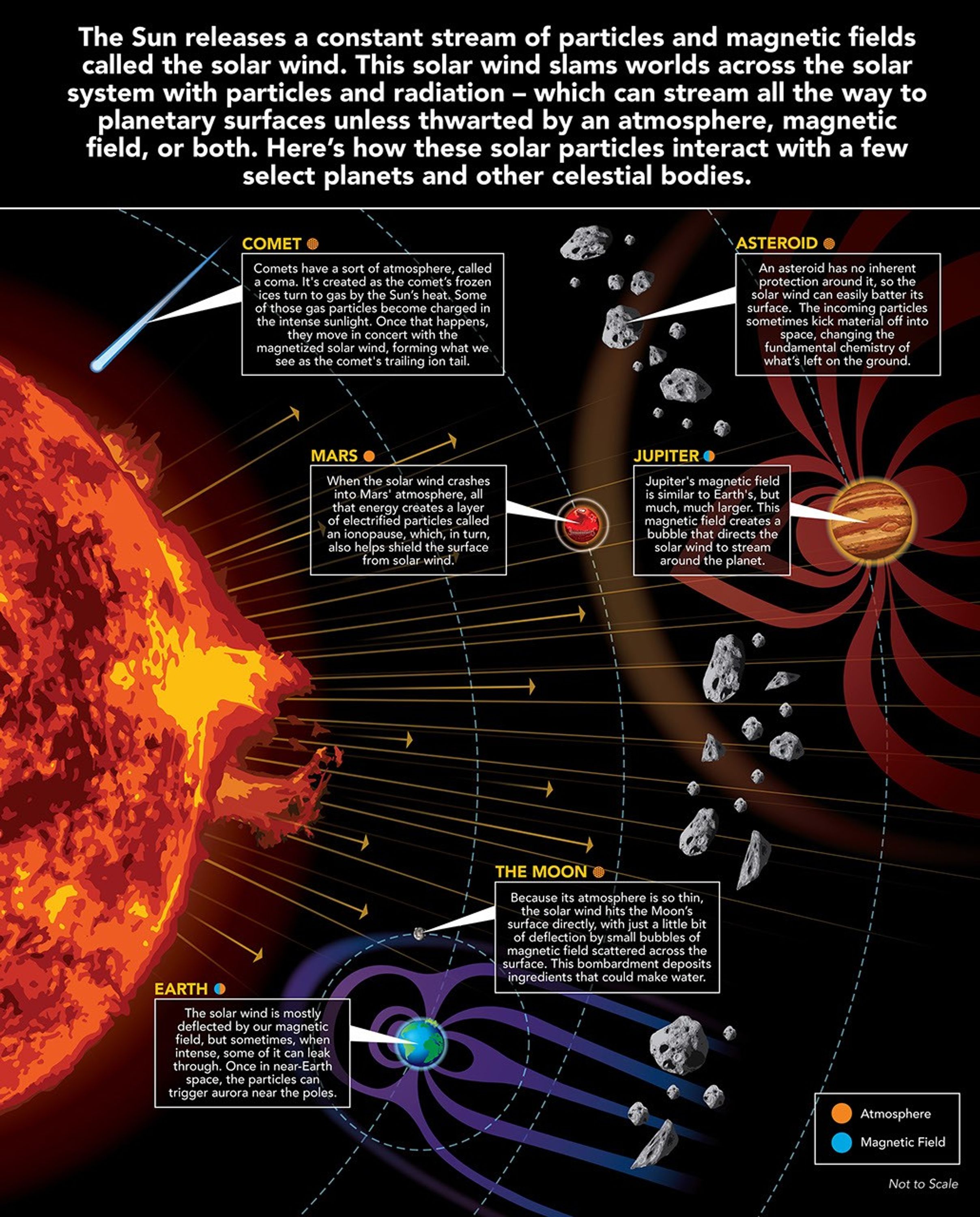Surprising Links: Earth’s Magnetic Field and Atmospheric Oxygen Co-Vary Over 540 Million Years
Recent research has revealed a stunning and statistically strong correlation between two seemingly unrelated aspects of our planet: the Earth’s magnetic field strength and atmospheric oxygen levels. Examining the past 540 million years, scientists have observed that when one rises or falls, so does the other—offering new insight into how Earth's deep interior and surface life are interconnected (livescience.com).
🌍 Why This Discovery Matters
-
It suggests a deep coupling between Earth's inner geophysical processes and its surface environment, including oxygen-producing life forms.
-
It may explain key periods of biological explosion, such as the Ediacaran (591–565 million years ago) and the era when Pangaea formed and later broke apart.
-
It provides crucial clues for understanding planetary habitability—on Earth and potentially on exoplanets.
The Oxygen Puzzle: What Has Changed Through Time?
Earth’s atmosphere today contains about 21% oxygen, thanks to billions of years of photosynthesis. Geochemical evidence—like fossil charcoal which requires oxygen to form—and sediment records help scientists reconstruct oxygen levels back to the Cambrian period (about 540 million years ago) (perplexity.ai, nature.com).
Unveiling the Magnetic History: VGADM
The Virtual Geomagnetic Axial Dipole Moment (VGADM) tracks the strength and direction of Earth’s magnetic field over geological time. Scientists measure this using magnetic minerals in ancient rocks, which align like frozen compasses as lava cools (scientificamerican.com).
A Robust Statistical Correlation
By comparing VGADM measurements with oxygen proxies, researchers calculated a correlation coefficient of 0.72—a remarkably high value across half a billion years. The match remains strong even when correcting for long-term trends, with a negligible lag of only ~1 million years (x-mol.com).
Notable Peaks: The Ediacaran & Pangaea Events
Two major geologic windows stand out:
-
Ediacaran Period (591–565 Ma):
-
Magnetic field significantly weakened (up to 30× less intense) (x-mol.com, scitechdaily.com).
-
Coincident surge in atmospheric oxygen and emergence of early complex organisms (phys.org).
-
-
Formation and breakup of Pangaea (330–220 Ma):
-
Simultaneous peaks in both magnetic field strength and oxygen levels (livescience.com).
-
These synchronous events reignite discussion about how internal geodynamics, surface conditions, and life evolution intertwine.
Possible Mechanisms Behind the Link
1. Magnetic Shielding Hypothesis 🌐
The geomagnetic field protects Earth’s upper atmosphere from solar wind and ionizing radiation, preventing erosion of atmospheric molecules (including oxygen).
Previous simulations indicate this shielding effect can significantly preserve atmospheric composition (livescience.com, nature.com).
2. Plate Tectonics and Core-Mantle Dynamics
Plate movements and mantle convection alter heat flow near Earth’s core, affecting the geodynamo that sustains the magnetic field. Meanwhile, tectonic shifts release nutrients that foster photosynthetic oxygen production .
3. Hydrogen Escape During Weak Fields
Periods of weakened magnetism (like Ediacaran) may have allowed hydrogen to escape more freely, indirectly enriching atmospheric oxygen by reducing competing species (phys.org).
4. External or Unknown Drivers
A third, currently unidentified planetary process—such as supercontinent cycles—might simultaneously drive changes in both the magnetic field and oxygen. While intriguingly plausible, evidence is still developing (livescience.com).
What This Means for Earth and Beyond
-
Earth's habitability: A strong magnetic field may have shielded our planet long enough for oxygen-breathing life to flourish.
-
Exoplanet exploration: Identifying worlds with magnetic fields may help narrow down targets likely to support life (earth.com).
-
Planetary modeling: Earth system models must now account for deep-Earth influences on atmospheric evolution.
-
Interdisciplinary science: This research bridges geology, atmospheric science, and astrophysics—highlighting the value of integrated, cross-disciplinary investigations (science.org, scientificamerican.com).
Visual Summary
-
Image 1 (top): Infographic of Earth’s magnetic field lines and magnetosphere.
-
Image 2: Global contour map of the magnetic field strength at Earth’s surface.
-
Image 3: Diagram showing solar wind deflected by Earth's magnetic shield—highlighting atmospheric protection.
Looking Ahead: Where Do We Go From Here?
-
Broader timescale data – Extend our understanding beyond 540 million years, looking at deeper geologic records.
-
Mechanism testing – Run climate-tectonic simulations linking mantle convection, magnetic field generation, and surface oxygen dynamics.
-
Focus on supercontinent cycles – Study the timing and effects of Pangaea and pre-Pangaea on Earth’s interior and atmosphere.
-
Apply to exoplanets – Foster dialogue between Earth scientists and astronomers to refine criteria for habitable exoplanets.
🧩 Earth’s Interconnected Story
-
Deep Earth: Molten iron core → magnetic field via geodynamo.
-
Surface: Life (photosynthesis) + tectonic upheavals → oxygen fluctuations.
-
Interaction: Magnetic fluctuations can modulate atmospheric retention and hydrogen escape; tectonic cycles drive both.
Together, these feedback loops oscillate through deep time—shaping Earth’s environment and life's evolution.
Conclusion
The discovery of a strong 0.72 correlation between Earth's magnetic strength and oxygen underscores a powerful, long-unrecognized planetary link. Though causation remains under study, the implications are profound—it suggests that planetary habitability depends on deep-Earth dynamics, not just surface conditions.
By revealing how Earth's interior, surface environment, and life are intricately linked over hundreds of millions of years, this research transforms our understanding of what makes a planet truly habitable—with potential guidance for our search for life in the Universe.